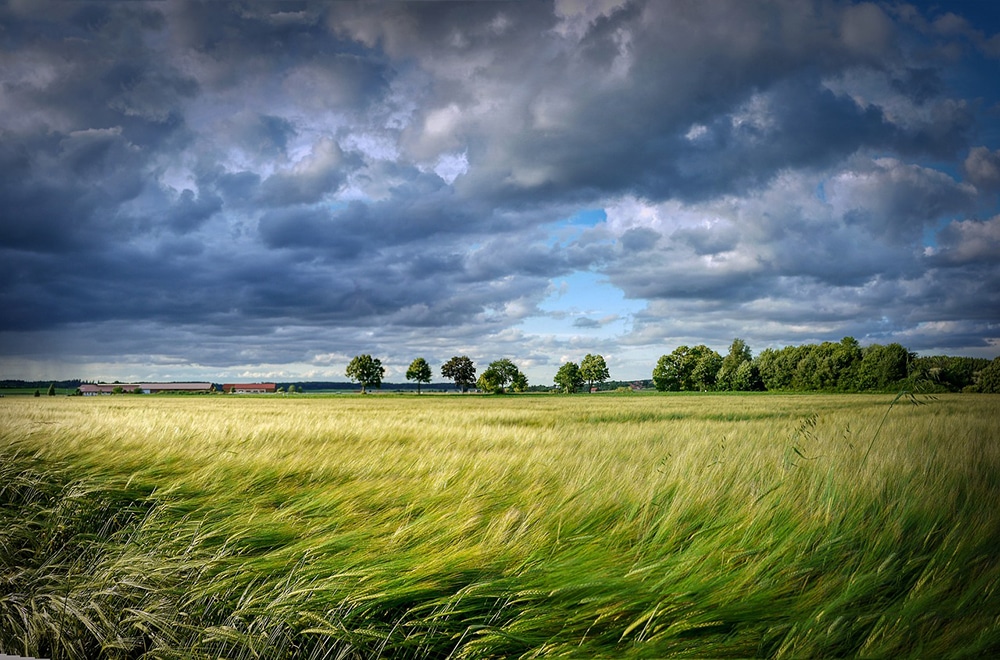Pennsylvania drivers might not think of high-speed winds as an everyday driving hazard. The Keystone State does, in fact, have its share of high wind events. Last year, 2021, was a record-breaking year for Pennsylvania tornadoes, as nine twisters touched down in the western part of the state. During the same year, Hurricane Ida brought massive wind damage to our state and caused the Schuylkill River to reach a height of over 17 feet.
As we look forward with hope to safer driving weather in 2022, we want to encourage all PA drivers to know the steps to driving safely during high winds. Wind speeds of even 30 mph can begin to pose serious risks to motorists. With increasingly higher wind speeds come increasingly greater dangers to drivers, especially motorcyclists and operators of large vans, buses, and trucks. Let’s all be better prepared next time high-speed winds rip through our cities and counties.
The best defense against driving in adverse weather is to not drive at all. But we know that’s not always realistic. So, what are some precautions you should take when you do need to drive in high winds? The car accident lawyers from Shrager, Sachs, & Blanco offer high wind safety tips to help motorists navigate windy roadways.
After learning tips for how to drive safely in high-speed winds, please contact the law office of Shrager, Sachs, & Blanco if you have questions about a motor vehicle-related legal matter.
What Are High-Speed Winds?
The National Weather Service describes wind speeds by threat level, from “Non-Threatening” to “Extreme.” Sustained winds of 26 to 39 mph with gusts of 35 to 57 mph are considered “very windy” and a “moderate” threat, warranting a wind advisory.
When sustained wind speeds reach 40 mph, a wind warning is issued as a “high” threat level. This threat level warns motorists and pedestrians that winds between 40 and 57 mph are a “high threat to life and property from high wind.”
“Extreme,” the highest threat level warning, is reserved for wind speeds greater than 58 mph, or frequent wind gusts greater than 58 mph. Winds at this speed are referred to as “damaging” winds and are considered an “extreme threat to life and property from high wind.”
High Wind Rules for Safe Travel
If you find yourself driving in strong winds, you will need to adjust your actions to fit the conditions. The normal speed limits, advised following distances, and other standard driving behaviors are recommended only under ideal driving conditions, when weather doesn’t threaten motorist safety.
Remember, the best safety advice is to stay at home when bad weather strikes. Once you’re on the road, it’s never too late to pull over and wait until you feel it is safe to resume driving. It’s especially dangerous for motorcyclists to attempt to travel under these conditions, and bikers should avoid strong winds as much as they are able.
When waiting is not a feasible option, the following high wind driving safety tips can help you adapt to the unique hazards posed by high-speed winds.
- Slow Down. It’s more difficult to control a vehicle at higher speeds. Maintain strong control over your car by keeping a slow, even traveling speed. If the wind picks up while you’re traveling too fast for conditions, vehicle control can be wrenched from your hands and leave you little time to react before a collision occurs. If leaving for a work commute, appointment, or another time-sensitive errand, make sure to give yourself extra time to reach your destination.
- Keep a Firm Grip on the Steering Wheel. One-handed driving doesn’t suffice in high-speed winds. Keep both hands firmly on the steering wheel in the 10-and-2 or 9-and-3 position (based on the numbers on a clock). Hold the steering wheel as if you expect that it might be yanked in one direction or another at any moment. You may need to compensate by pushing slightly against the direction of the wind to keep your vehicle steady. However, be wary of overcompensating after a brief wind gust.
- Increase Following Distance. Under perfect driving conditions, the 3-second rule is suggested. This means allowing at least three seconds between you and the vehicle in front of you. However, when driving in abnormally windy weather, that distance should be increased to at least four, five, or six seconds. The more distance you can create between you and other vehicles, the more time you will have to react if something goes wrong.
- Watch Out for Debris. High-speed winds have the power to lift and throw large objects like garbage cans, chairs, downed tree limbs, items from lawns and porches, and even bicycles and shopping carts. Even moderate winds can tear small branches from trees and throw them into the path of an oncoming vehicle. Drivers should be alert and continue scanning the road ahead for the sudden appearance of any wind-thrown debris.
- Turn On Headlights and Wipers When Needed. High-speed winds can pick up dust and drive rain, impacting visibility during a high-speed wind event. You may find that you need to use your headlights and windshield wipers when winds are especially strong or accompanied by precipitation. When conditions are dry, using windshield wiper fluid to periodically clean dust from your windscreen can help improve visibility.
- Stay Clear of Large Vehicles. High-speed winds have a particularly dangerous effect on commercial trucks and other vehicles with large surface areas and high centers of gravity. This includes box trucks, delivery vans, buses, and minibuses. Drivers of these vehicles are more likely to lose control in periods of high-speed wind gusts. Keep your smaller passenger auto a safe distance from large trucks, vans, and buses in case of an event.
The Dangers of High-Wind Auto Accidents
Even if you follow this high wind safety checklist, it doesn’t mean that every driver on the road around you will. Many drivers are more accustomed to the hazards that accompany rain, snow, or ice. Fewer drivers may have the skillset to react well to high-speed winds on the highway.
If you were injured in an auto accident caused by another driver, you may be able to obtain compensation for the losses you suffered. An experienced attorney from Shrager, Sachs, & Blanco can provide advice concerning the legal options that may be available in your particular situation. Injured accident victims are welcome to sit down for a discussion regarding your legal matter with a car accident attorney from our firm. An initial case consultation always comes at no cost to you.









